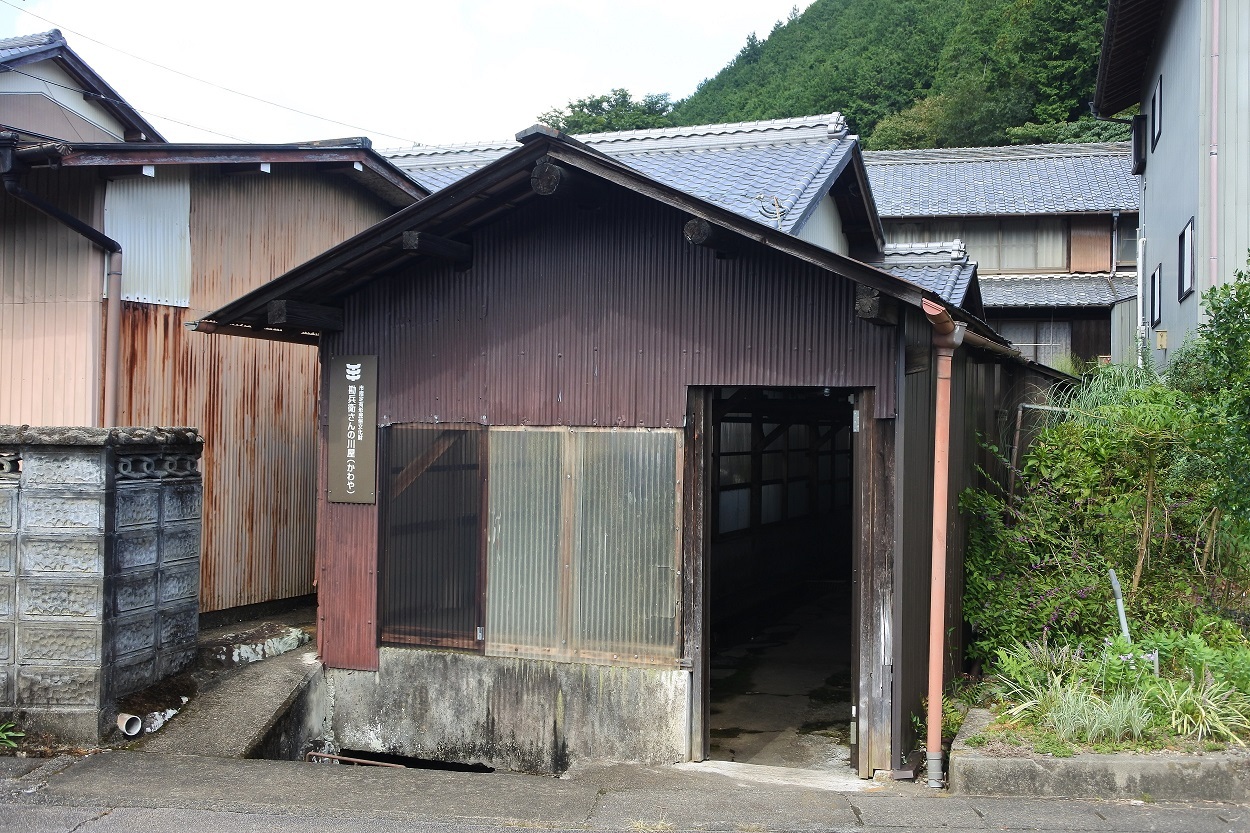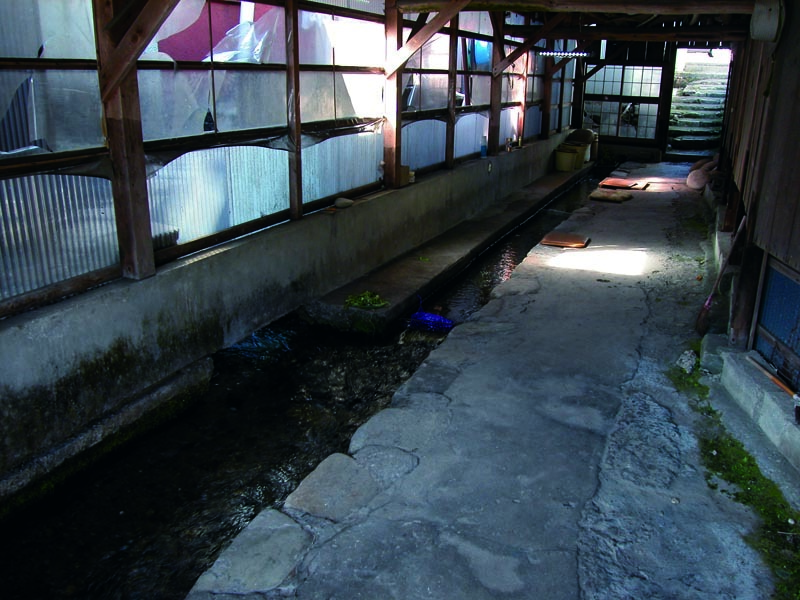Removing impurities from the kozo (paper mulberry) bast fibers is one of the most important steps in making Hon-minoshi. The paper is renowned for its smooth, unblemished surface, so the work of chiritori, removing specks of dirt and damaged fibers, is exacting. The paper fibers are placed in a basket or sieve under running water and picked over by hand, with plenty of natural light to facilitate the task.
Most washi workshops in Mino have a sink with clean running water for this process. Until the Meiji era (1868–1912), however, there were over a thousand washi workshops in the Mino area, and large facilities were needed for chiritori. At the time, simple shelters over sources of spring water (kawaya) were shared by the community of papermakers. Kanbei’s Kawaya is named after the family who used to maintain it. It is the largest of the remaining kawaya in Mino.
The simple structure is open at both ends, with a corrugated metal roof supported by timber trusses, and windows along one side to provide ample natural light. Spring water flows constantly along a stone channel, around 13 meters long and 50 centimeters wide. At its peak, up to 30 people would have worked here, kneeling side by side on cushions on the ground, crouched over the water for hours. The shelter protected them from the elements, but not from the heat or cold. Although it is no longer used for chiritori, Kanbei’s Kawaya has been preserved to highlight the importance of clean water for making washi and the communal aspect of the craft. Local people now use the kawaya to wash vegetables.


